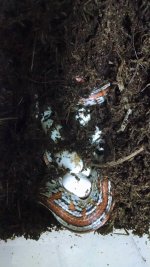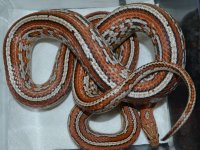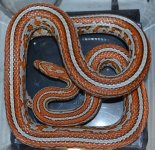MysticExotics
(formerly NWHeather)
I came home to find my Miami Tessera laying eggs. This was a pairing I decided to do last minute.
Miami Tessera X Miami Tessera (both parents ph Amel).
Pictured are the Dam and the Sire.
Now the hard part...waiting for the babies to hatch.
Miami Tessera X Miami Tessera (both parents ph Amel).
Pictured are the Dam and the Sire.
Now the hard part...waiting for the babies to hatch.
Attachments
Last edited:



